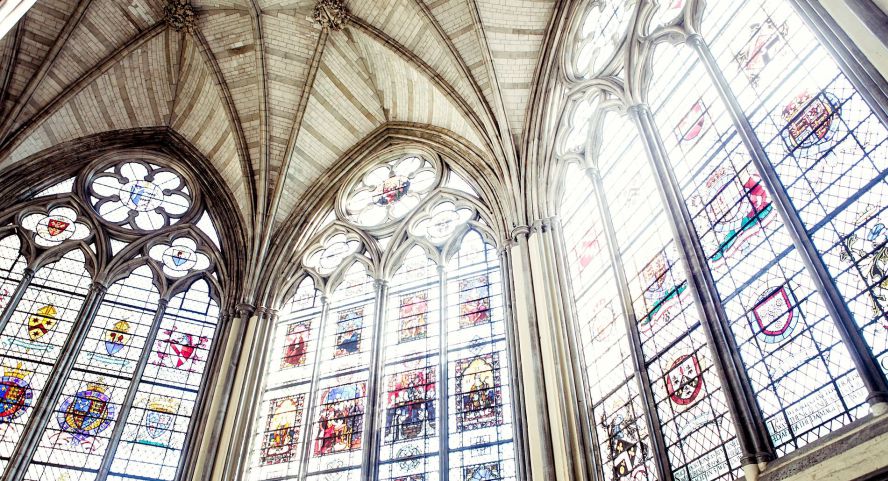The Meaning of Selected Animal Symbolism in Dhuoda of Septimania’s Parenetic Homiletics (c. 803-843)
Małgorzata Chudzikowska-Wołoszyn
University of Warmia and Mazury in Olsztyn , Polandhttps://orcid.org/0000-0001-5631-7259
Abstract
The main purpose of this article is to familiarize the reader with the stock of animal symbols used in parenetic reflections of the Carolingian intellectual Dhuoda of Septimania, the authoress of the mirror manual (Liber manualis), addressed to her teenage son Wilhelm. The presented analysis will focus on discussing the provenance of the symbolic signatures used in the work. An attempt will also be made to characterize their role in Dhuoda,s rhetoric and teaching. At this point, it will be important to expose the individual interpretation and reflections of the mother-authoress in relation to the animalistic symbols drawn in Wilhelm’s memory. Dhuoda’s interpretation will also be set in a broader theological and exegetical context. It should be emphasized that for the Duchess of Septimania – as for all her contemporaries – the key to interpreting the world and its details was found in the mystery of Christ. Sorrounding nature was treated like a book, which was written with mystical allegories of the Creator. A skillful reading of the symbols given to men could lead him to ultimate wisdom, help him understand the mystery of the invisible God and, finally, also the essence of humanity. The exemplification of the symbols used in the Liber manualis, made for the purpose of this article, will also allow conclusions to be drawn about the intellectual formation of the Carolingian authoress, her literary technique, degree of the orginality, and rhetorical competence.
Keywords:
Dhuoda of Septimania, Liber manualis, early medieval paraenesis, symbolism, animal allegories, allegorical interpretationReferences
Acta sanctorum ordinis Sancti Benedicti in saeculorum classes distributa, Saeculum IV, ed. J. Mabillon, Paris 1677.
Augustinus, De doctrina christiana, PL 34, 15-122.
Św. Augustyn, O nauce chrześcijańskiej, tł. J. Sulowski, Patres Ecclesiae 1, Warszawa 1989.
Augustinus, Enarrationes in Psalmos, PL 36, s. 67-1028.
Augustinus, Sermones, PL 38, 23-994,
Augustyn z Hippony, Kazania do Ewangelii według św. Mateusza, tł. A. Żurek, ŹMT 88, Kraków 2022.
Beda Venerabilis, In Marci Evangelium Expositio, ed. D. Hurst, CCL 120, Turnhout 1960, s. 431-648.
Claudius Aelianus, De natura animalium 3, 45, red. R. Hercher, Parisius 1858.
Klaudiusz Elian, O właściwościach zwierząt, tł. A.M. Komornicka, Kraków 2005.
Dhuoda, Liber manualis Dhuodane quem ad filium suum transmisit Wilhelmum, w: Manuel pour mon fils, red. P. Riché, tł. B. De Vregille – C. Mondésert, SCh 225, Paryż 1997.
Gaius Plinius Secundus, Naturalis Historiae 10, 9, 22, t. 2, red. L. von Jan, Teubner – Lipsiae 1856.
Gajusz Pliniusz Sekundus, Historia Naturalna, tł. I. Mikołajczyk, t. 2, Antropologia i zoologia, Toruń 2019.
Gregorius Magnus, Moralium Libri sive Expositio in Librum Beati Job, PL 76, 9-782.
Św. Grzegorz Wielki, Moralia. Komentarz do Księgi Hioba, t. 6, ks. 28-32, tł. A. Wilczyński, ŹM 77, Tyniec 2016.
Św. Grzegorz Wielki, Moralia. Komentarz do księgi Hioba, t. 4, ks. 17-22, tł. E. Buszewicz – A. Wilczyński, ŹM 63, Kraków 2013.
Hieronymus, Commentarium in Evangelium Matthaei, PL 26, 15-218, tł. J. Korczak,
Hieronim, Komentarz do Ewangelii według św. Mateusza, ŹMT 46, Kraków 2008.
Hiliarius Pictaviensis, In Evangelium Matthaei Commentarius PL 9, 917-1076.
Hilary z Poitiers, Komentarz do Ewangelii św. Mateusza, tł. E. Stanula, PSP 63, Warszawa 2002.
Hugo de S. Victore, De bestiis et aliis rebus, PL 177, 13-164.
Hugon z Folieto, Fizjologi i Aviarium. Średniowieczne traktaty o symbolice zwierząt, tł. S. Kobielus, Tyniec 2009, s. 89-165.
Klaudiusz Elian, O właściwościach zwierząt, tł. A.M. Komornicka, Kraków 2005.
Origenes, Commentarium in Evangelium Matthaei, PG 13, 829-1800.
Orygenes, Komentarz do Ewangelii według Mateusza, tł. K. Augustyniak, ŹMT 10, Kraków 1998.
Bardski K., Kapłaństwo ministerialne w biblijnej symbolice tradycji chrześcijańskiej, „Verbum Vitae” 12 (2007) s. 147-160.
Bianco M.G., Aspetti di quotidianità culturale nel Liber manualis di Dhuoda: il libro, l’autrice, il destinatario, w: Percepta rependere dona. Studi di filologia per Anna Maria Luiselli Fadda, red. C. Bologna – M. Mocan – P. Vaciago, Firenze 2010, s. 1-20.
Chudzikowska-Wołoszyn M., Idea compassio fraterna w parenetycznej instrukcji Dhuody z Septymanii († 843), „Vox Patrum” 71 (2019) s. 87-113.
Claussen M.A., God and Man in Dhuoda’s Liber manualis, „Studies in Church History” 27 (1990) s. 43-52.
Dictionnaire des auteurs grecs et Latins de l’antiquité et du moyen ȃge, ed. W. Buchwald – A. Hohlweg – O. Prinz, Turnhout 1991.
Feros Ruys J., Mater Litterata: Considerations of Maternity and Latinity in the Post-Medieval Reception of Dhuoda’s Liber Manualis, „New Medieval Literatures” 10 (2008) s. 191-220.
Histoire litéraire de la France 5, Paris 1866 (reprint).
Jaffe C., Dhuoda’s Handbook for William and the mother’s manual tradition, w: Listening to their voices: the rhetorical activities of historical women, red. M.M. Wertheimer, Columbia 1997, s. 177-198.
Jóźwiak M., Świat zwierząt w anonimowym Comentarii in Job, „Verbum Vitae” 32 (2017) s. 421-444.
Mayeski M.A., Dhuoda. Ninth century Mother and Theologian, Scranton 1995.
Mayeski M.A., Women: Models of Liberation, Kansas City 1988.
Nadolski B., Lectio divina, „Ruch biblijny i liturgiczny” 54 (2001) s. 47-50.
Wojciechowska K., Wbrew zwyczajom i tradycji. Interpretacja metafory „Nie jest dobrze zabierać chleb dzieci i rzucać pieskom” (Mk 7,27B) z perspektywy Syrofencjanki, „Collactanea Theologica” 85/3 (2015) s. 33-48.
Wollasch J., Eine adlige Familie des frühen Mittelalters. Ihr Selbstveständnis und ihre Wirklichkeit, „Archive für Kulturgeschichte” 39 (1959) s. 150-188.
University of Warmia and Mazury in Olsztyn https://orcid.org/0000-0001-5631-7259
License

This work is licensed under a Creative Commons Attribution-NoDerivatives 4.0 International License.
Papers published in Vox Patrum are covered by the Attribution-NoDerivatives 4.0 International (CC BY-ND 4.0) licence. Authors and users can use published works licensed under the CC-BY-ND since 2018. For earlier publications, copyrights are available under fair use rights in accordance with the Act of February 4, 1994 on copyrights and related rights.







